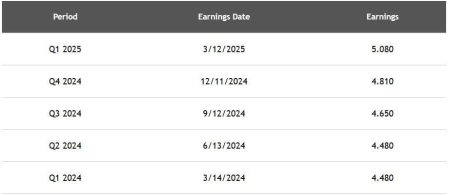The evolving global landscape, marked by rising geopolitical tensions and shifting economic paradigms, is bringing currencies into sharper focus as critical drivers of investment outcomes. This heightened importance stems from the increasing recognition that currencies, far from being passive bystanders, play an active role in shaping portfolio performance, particularly in an era of unpredictable inflation and multipolar power dynamics. The traditional view of currencies as mere facilitators of international trade is giving way to a more nuanced understanding of their complex interplay with other asset classes and their sensitivity to global macroeconomic forces.
This shift in perspective is underscored by the seemingly contradictory stance of some political actors who simultaneously advocate for currency devaluation as a tool for domestic industrial revitalization while also touting a strong currency as a symbol of national strength. This inherent tension reveals the multifaceted nature of currency management and its implications for both domestic and international economic relations. Furthermore, the established norms governing currency movements, such as predictable responses to “risk-on” and “risk-off” market sentiment, are becoming less reliable in the current inflationary environment. This unpredictability is a second-order effect of the broader regime shift in global markets, requiring investors to reassess their foreign exchange (FX) hedging strategies and abandon previously held assumptions about currency behavior.
The increasing complexity of currency dynamics prompted a deep dive into the effectiveness of various FX hedging strategies. While a substantial body of academic research exists on this topic, much of it focuses on the binary choice of whether or not to hedge. This research aimed to explore a more dynamic approach, seeking to identify market signals that could inform investors on the optimal timing and extent of FX hedging. This involved developing and testing various dynamic hedging strategies that consider factors such as volatility, carry, momentum, and value (Purchasing Power Parity).
The research focused on developed market currencies due to the availability of robust data and the richer insights derived from their historical performance. The analysis adopted the perspective of a domestic investor, incorporating the historical context of currency transitions, such as the introduction of the euro. The results clearly demonstrated that the worst portfolio outcomes, measured by Sharpe ratios, invariably resulted from adhering to the traditional binary approach of either fully hedging or remaining completely unhedged. This underscored the potential for significant performance improvement through more sophisticated hedging strategies.
Among the dynamic hedging strategies tested, the most effective approach employed a standard risk aversion parameter to determine the optimal hedging level. This method essentially evaluates whether the potential carry earned from an unhedged position adequately compensates for the associated volatility risk. The research demonstrated that actively managed FX hedging, guided by market signals, can significantly enhance portfolio performance compared to static approaches. This finding echoes the insights gained from earlier research on inflation hedging, where proactive strategies based on thorough empirical analysis proved valuable in navigating the recent inflationary surge.
This research into FX hedging exemplifies the power of anticipatory research in preparing for future market shifts. By delving deeply into the complexities of FX dynamics, valuable insights were gained that have practical implications for managing currency risk in an increasingly volatile global environment. This proactive approach enables investors to respond more effectively to unforeseen market changes, such as the recent surge in inflation or the growing instability in currency markets. The findings suggest that the world is entering a period of heightened FX volatility and evolving currency relationships, requiring investors to adopt more sophisticated and dynamic hedging strategies. This shift underscores the importance of incorporating geopolitical considerations into investment decisions, as geopolitical instability increasingly manifests in currency fluctuations. The research also highlights the value of ongoing research in navigating the complexities of global markets and staying ahead of emerging trends.










